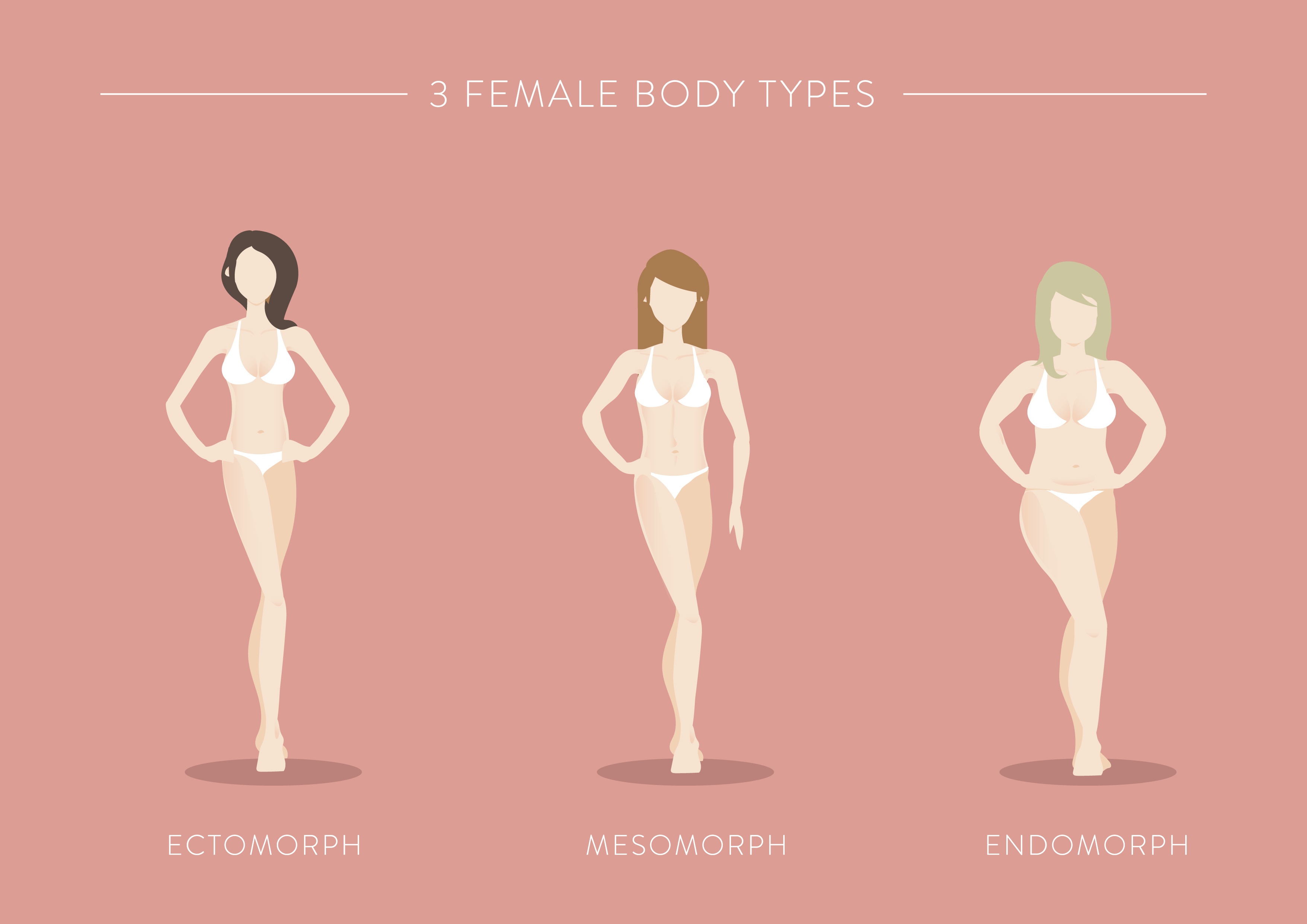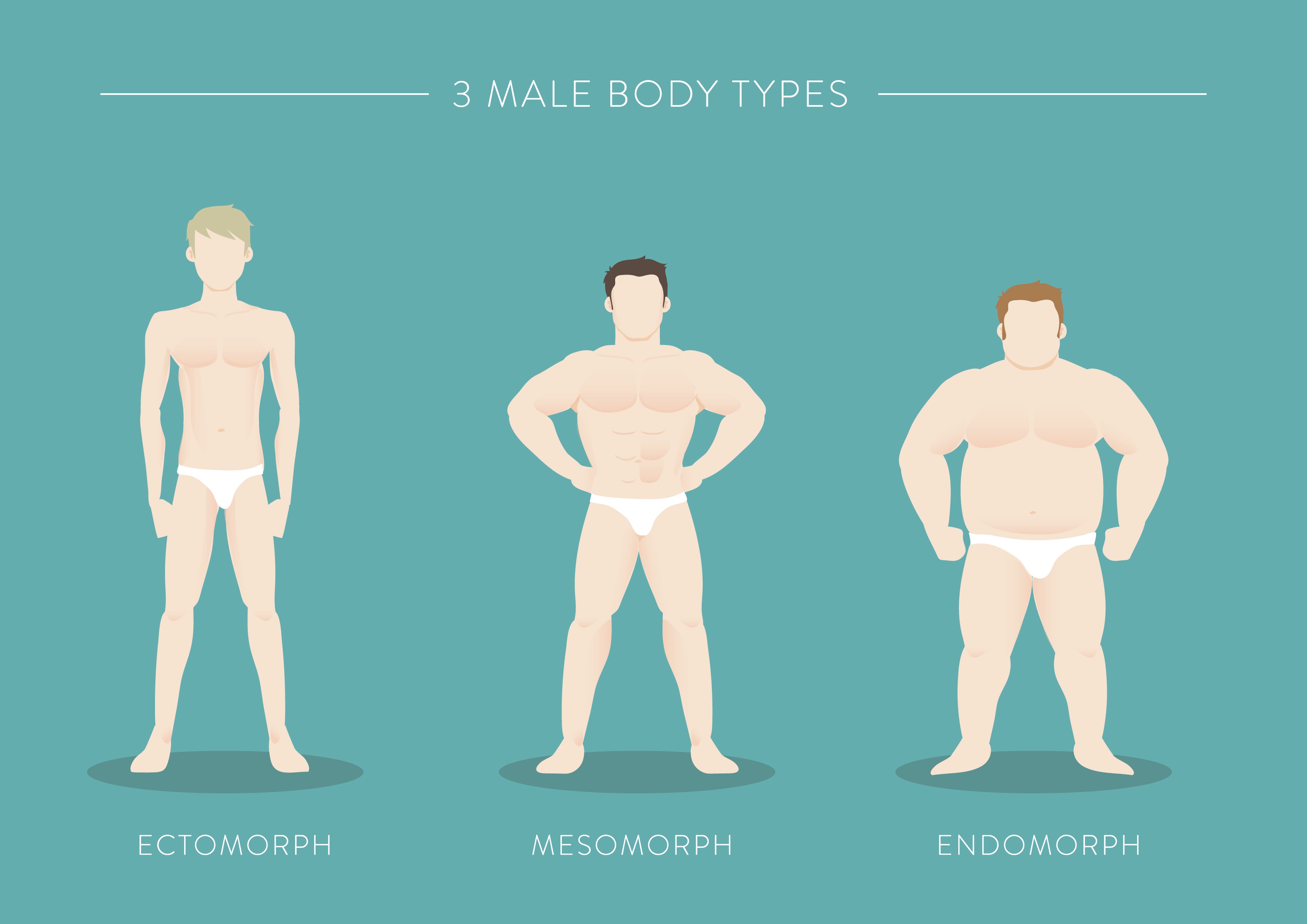What does your body type mean and what does it say about your health? Let's examine the characteristics and health indicators of the three basic human body types: the endomorph (round/soft) the mesomorph (athletic/muscular) and the ectomorph (slim/petite). Whether your body is an apple or pear shape, all body types are capable of maintaining a healthy body weight with the right diet and exercise modifications. Let’s explore the clues your body type gives on the outside about what’s going on inside, and how to use that information to succeed with diet and exercise.
Genetics
First, let’s talk about genetics.
Although genetics definitely plays a role in your ability to maintain a healthy body weight and succeed with an exercise program, less than 2% of obesity can be excused by genetics alone.
Genetics can dictate your body shape or type, but results are possible for everyone with the right weight management approach.
Body shapes and your physical make-up
Body shapes can say a lot about an individual’s unique physical make-up which can help determine the best path to success for weight loss and maintenance. Let’s look at some defining characteristics of these different physical make-ups and what they tell you about what’s going on inside your body.
- Fat accumulation in the upper to mid body: Elevated Insulin and cortisol levels.
- Fat storage in the lower body (midriff) and hips: Decreased levels of insulin and cortisol and/or higher levels of estrogen and progesterone (estrogen opposes the action of insulin and cortisol and progesterone opposes the action of cortisol).
- Fat deposits on the back of the arm or leg: Decreased growth hormone or testosterone.
- Fat storage in the breasts and hips: May provide an indication of excess estrogen.
- Men with fat accumulation in the belly and fatty breast tissue: Decreased testosterone and elevated estrogen.
- Apple types: Are often strong insulin secretors should avoid foods that cause large rises in insulin – carbohydrates (especially simple).
- Pear types: Are often less insulin responsive and may not lose weight as effectively with only low carbohydrate intake. Optimizing the other hormones such as growth hormone and testosterone. Lifestyle modifications and lower calorie intake will support long term success.
- Round face, fat storage in the upper back and neck and decreased muscle mass/flabby body: May confirm issues with cortisol. Elevated cortisol can be reduced by Phosphorylated Serine (spherios), reducing stress, good sleep hygiene, and exercise.
Define your approach by your body type
Do you know if you are you an ectomorph, mesomorph or endomorph? Why does this matter? Different body types respond differently to both training and nutrition. By looking at your body characteristics and recognizing your body type, you can make a more informed choice about selecting a nutrition and training program that’s right for you.

The Ectomorph Body
The ectomorph body style is fragile and small. The bones are light, joints are small and they carry little lean muscle. The limbs are often long and thin with front drooping shoulders making them even look smaller. They naturally have lower strength and can expect to gain muscle slower but will also not likely gain extra fat.
- Delicate body build
- Flat chested
- Lean
- Small shouldered
- Difficult to gain muscle
The Mesomorph Body
The bones and muscles of the head are prominent. Features of the face are clearly defined, such as defined cheek bones and a square jaw. The face is long and broad, and is cubicle in shape. Arms and legs are developed and even the digits of the hand are muscled.
- Athletic
- Females have hourglass shape
- Males have a rectangular shape
- Muscular body
- Good posture
- Can add muscle easily
- More at risk of weight gain than ectomorph
The Endomorph Body
Endomorph body is round and soft. The round shape is from the appearance of the majority of the fat located in the abdominal area. Not all endomorph shapes have this central obesity, but it can be an easy distinguishing trait. Endomorphs have shorter arms and legs and therefore usually on the short side.
- Soft body
- Underdeveloped muscles
- Round body habitus
- Can put on weight easily
- Hard to lose weight
- Can add muscle mass easily
- Must pay extra attention to nutrition

Men vs. women
Yes, men generally have more muscle than women and their hormonal make-ups allow them to lose weight a bit more efficiently, but they have weight problems as well. Men tend to carry weight in the waist and abdomen, which is actually the most dangerous area to carry fat. The fat in this area is mostly visceral fat and is the most detrimental to health and has the highest risk of disease.
Women tend to store fat on the lower body on their hips, thighs and buttocks, giving some women a pear-like shape to their bodies. Women also tend to store fat closer to the surface of their skin (subcutaneous fat) than men do, increasing their tendency to form cellulite. This fat is less associated with disease and is more of a cosmetic issue for women.
More posts for you:
Vitamin B12 and stress
Questions?
Chat or call (877) 659-6050. Our Wellness Advisors are ready to assist you.
About TeleWellnessMD® CLICK HERE to browse our products.
TelewellnessMD® provides consulting and program recommendations for general health, age management, nutrition and other wellness healthcare needs through an online platform and network of wellness medical providers.